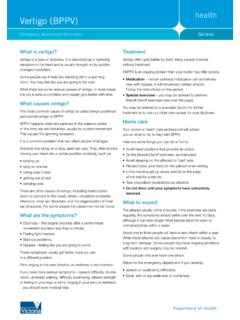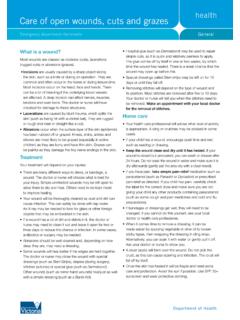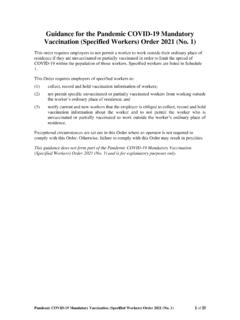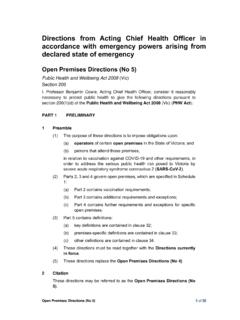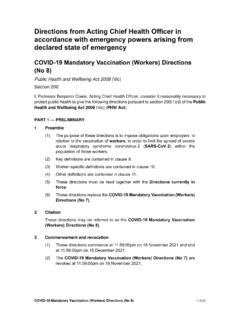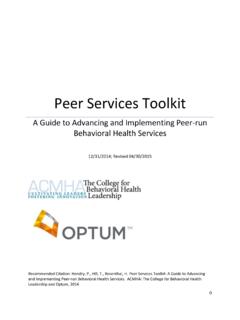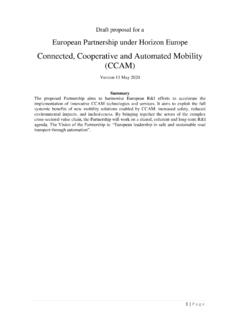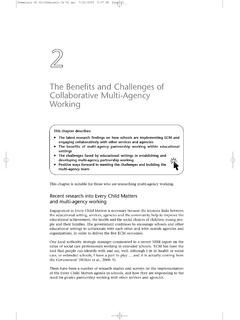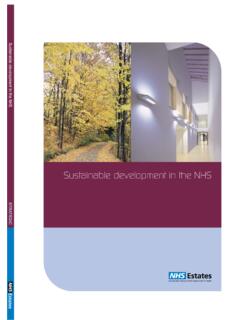Transcription of Writing measurable objectives - health.vic.gov.au
1 Page 1 Tip sheet Municipal public health and wellbeing planning Writing measurable objectives What is the tip sheet for? The reason for Writing any plan is to provide a map of where we are, where we want to be in the future and how we are going to get there. This simple aim can sometimes be obscured by the sheer breadth of a Municipal Public Health and Wellbeing Plan (MPHWP), as well as time pressures and political or organisational considerations. Writing measurable objectives means stating what council will do in a way that allows a reader to tell whether it has succeeded. The more measurable the objectives are, the more likely they are contributing directly to long term goals. This tip sheet is designed to assist heath planners to write objectives that provide clear guidance to business units responsible for implementing the plan and clear information to partners and community audiences.
2 What are objectives ? For the purposes of this tip sheet objectives are statements that explain how plan goals will be achieved. When considering health and wellbeing, plan goals are broad statements related to improving health and wellbeing status, through changes in mortality and morbidity, disability, quality of life and equity. These are statements about long-term benefits. Consequently, the goal of improved health and wellbeing status is achieved through a range of objectives that increase awareness and change behaviours; influence public policy and organisational practice; deliver more effective services; and create healthier environments. The actions taken to reach these objectives are called strategies. The language of planning can vary widely between councils so that objectives in some cases, might be termed goals , strategic priorities or key result areas and so on.
3 The terms and meanings used in this tip sheet use a program planning framework adapted from Victorian Department of Human Services publications (Round et al, 2005, VDHS, 2003a and 2003b). These are available at: It is not necessary to use the same terms to use this tip sheet, but you will need to identify what level your statements relate to. Term Scope Measured by Goal Long term benefits - such as health gain Outcome evaluation Objective Short or Medium term impacts - such as behaviour change Impact evaluation Strategy Short Term results - such as completed action Process evaluation Adapted from Round et al, 2005 Page 2 How can you write measurable objectives ? Plans by their nature are largely concerned with change or an effort to maintain valued aspects of the current situation. The extensive process of information collection and analysis, consultation, validation and priority setting is used to identify where you think effort needs to be focussed.
4 When it comes to Writing these into objectives , there should be a clear logic between objectives and the goal they are pursuing. The use of Program Logic in developing elements of your MPHWP might assist with this (see ). Objective statements will follow a general form: To do what, for whom, by when? Careful selection of the language used to express objectives can provide clearer intention of what will be done and what you hope to achieve. Strong, clear verbs describe the do component and are the key to setting the tone and commitment of the objective. The list of verbs below provides some examples of words that are action oriented applied to common interventions. Word Generally applied Examples Introduce, create, establish, advocate for, develop Healthy public policies and organisational practices that lead to supportive built, social, natural and economic environments To create a physical environment that supports physical activity participation for the whole community To develop an affordable housing policy for low income earners by end 2011 Increase, improve, strengthen Protective factors promoting healthy lifestyles and supportive environments Health literacy health related knowledge, attitudes, motivation, confidence, behavioural intentions and personal skills.
5 As well as knowledge of where to go and what to do to obtain support or services To increase access to education and employment opportunities for young people in rural communities To strengthen social and economic participation of people from migrant and refugee backgrounds Decrease, reduce, eliminate Risks, hazards and barriers overcoming health inequalities To reduce bullying behaviour among children aged 12 17 years within local schools Facilitate, initiate, participate in, support Social action and influence community participation, community empowerment, social norms and public opinion To facilitate the participation of young people in decisions that affect them Page 3 Caution is recommended against the over-use of words such as develop , facilitate or support . These are less descriptive and can dull the tone of a plan if over-used.
6 However, they should not be replaced with inferior, vaguer words or at the other extreme, technical terms or jargon. Avoid words like enhance , commit , which are not specific and hence more difficult to measure. Also, avoid multiple verb use for objectives : For example: Not: To explore opportunities to increase access Try: To increase access to .. In this case, exploring opportunities is probably a step towards increasing access . However, you don t need to include the steps you will take to achieve your objective in the objective statement. If it warrants it, this will be described at the strategy level (which, as stated above, are the actions taken to reach these objectives ). Words like explore , discuss , commence , seek, and encourage are often used in this way and should be avoided.
7 If these words cannot be eliminated in favour of a more direct word, the likelihood is that you are describing a strategy not an objective, or you are not clear enough in your own mind about what you propose to do. How can you keep your objectives consistent? One of the challenges of plan Writing is creating a consistent relationship between plan statements so that they are pitched at a consistent level. It is confusing if an objective in one part of a document is a broad statement while in another it is quite specific (more like a strategy). One way of checking whether your objectives are pitched at the right level is to ask why? The answer will test the theory behind your objective and should lead you to a health and wellbeing goal - whether stated or implied. If the goal is more than one step away from the statement the likelihood is that is pitched at a strategy level.
8 For examples, see below. Draft Objective To increase healthy eating among children and young people Objective Why? To improve their prospects of long term health and wellbeing. Goal Draft Objective Provide public transport orientation for newly arrived refugees Strategy Why? To improve use of public transport by newly arrived refugees within 12 months of arrival Objective Why? To increase physical activity participation by newly arrived refugees Objective Why? To improve their prospects of long term health and wellbeing. Goal Page 4 The verbs used might not provide any clues to the appropriate level. Words like increase and decrease are also likely to be used at goal level and a strategy level. However, at a goal level increase is likely to be applied to quality of life and decrease to the incidence of illness or disease.
9 At a strategy level both are likely to be applied to features of service systems or standards. Other words might fit an objective or strategy level, however, some will suggest that the statement is better included as a strategy level. Words more common at a strategy level include: Descriptive words for strategies provide develop deliver manage partner collaborate coordinate administer promote support contribute stimulate build expand extend streamline fund resource subsidise contract identify investigate survey research review consult evaluate report raise recognise celebrate document How can I check my objectives ? A good way to test your objectives is to use the SMART technique. SMART statements have the following characteristics. S specific: it indicates clear action on a determinant, population group and setting.
10 M measurable : it includes features that will help you tell whether it has succeeded. A attainable: it can be realistically achieved on time and within available resources. R relevant: it is a logical way to achieve your goals. T time-framed: it indicates a timeframe for action. Page 5 Examples: Objective: To increase healthy eating among children and young people. S M A R T Yes Partially Assuming a baseline, any increase can be measured. However, it might benefit from specific targets. Yes Yes No Consider adding ..by x date or ..within x time period Objective: To improve the use of public transport by newly arrived refugees with 12 months of their arrival. S M A R T Yes Yes Assuming a baseline, improvement in use can be measured. Yes Yes Yes While this tip sheet focuses on objectives , both goals and strategies should also be written in a way that allows you to answer the question Did we do and achieve what we intended?
